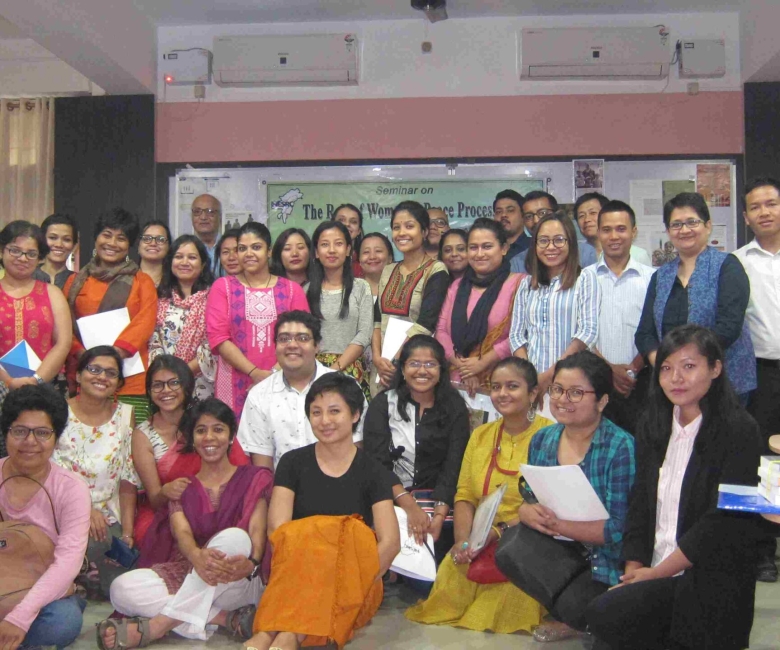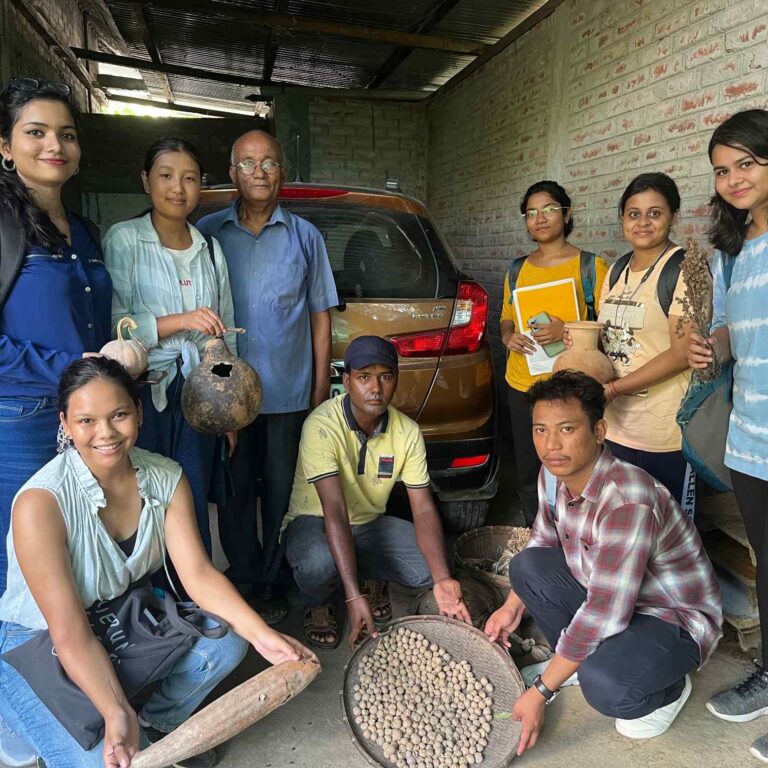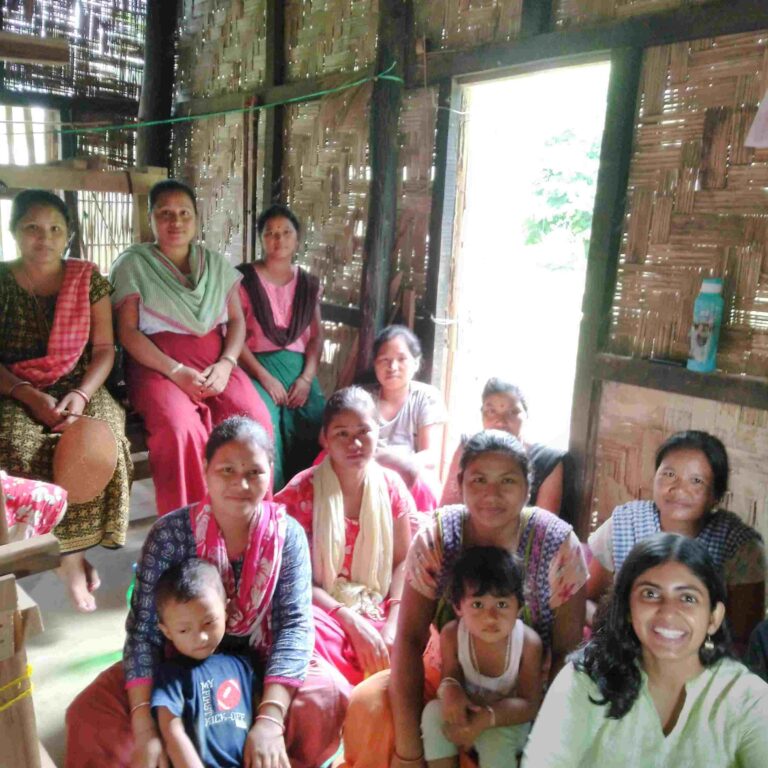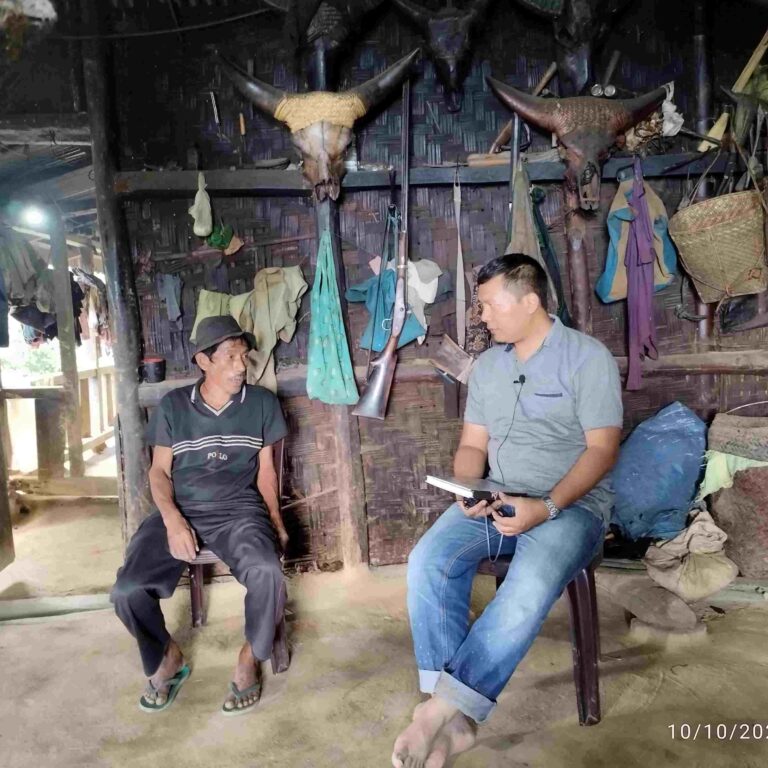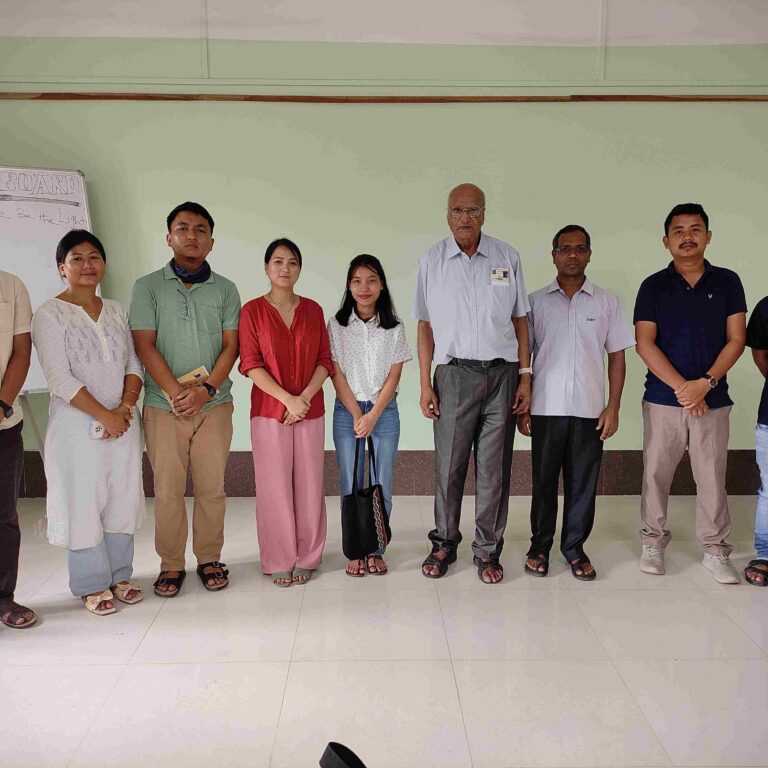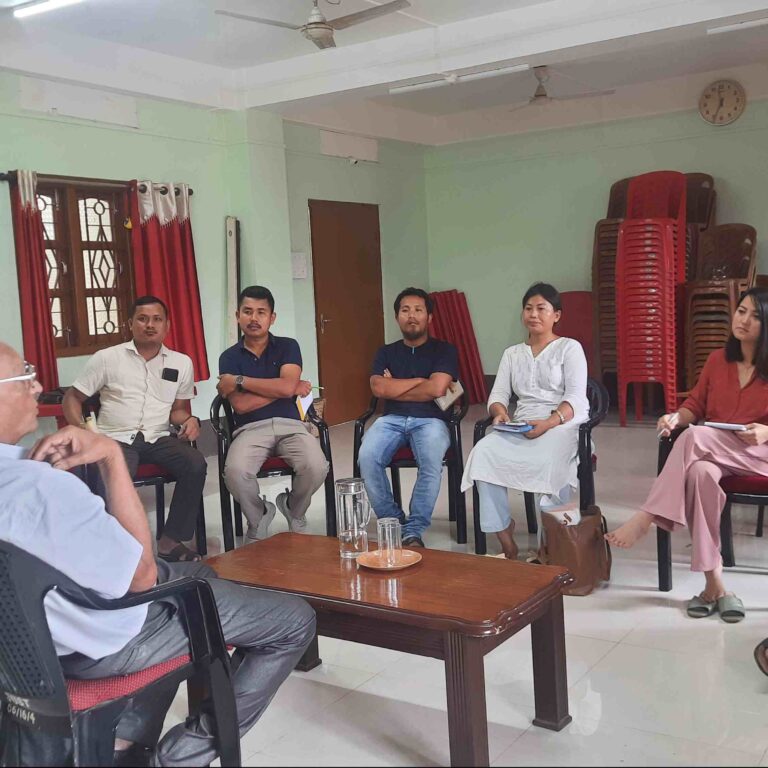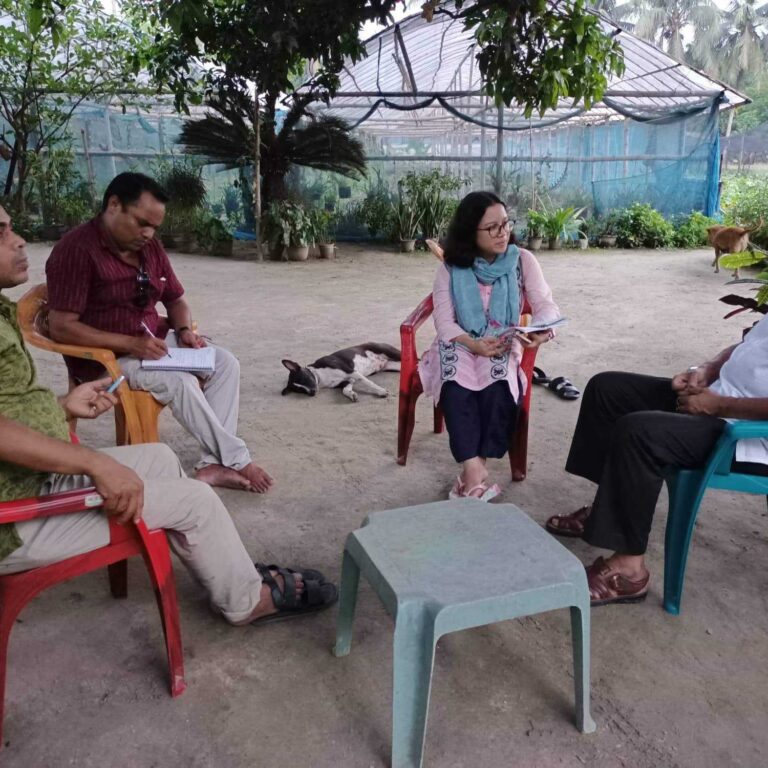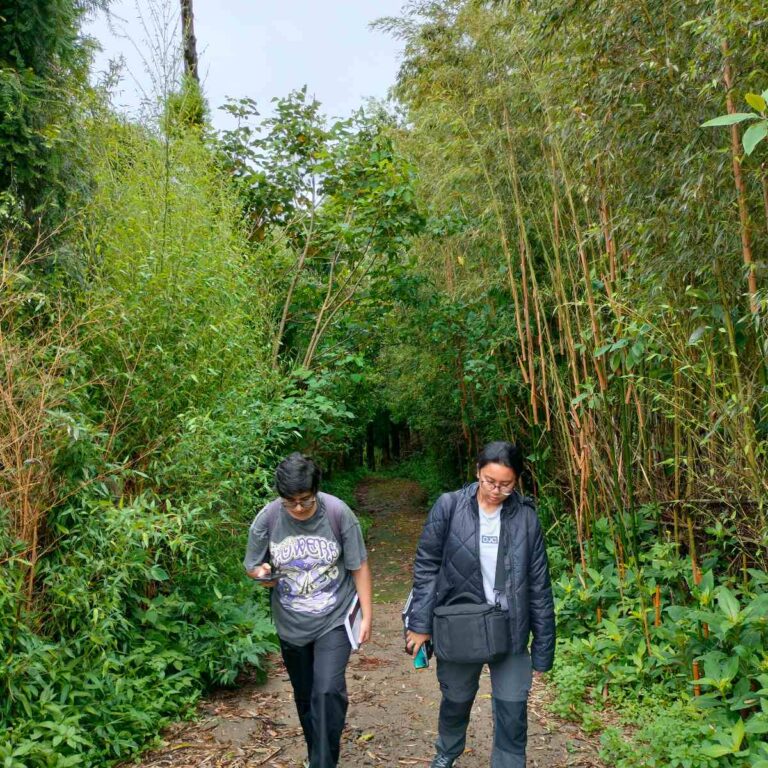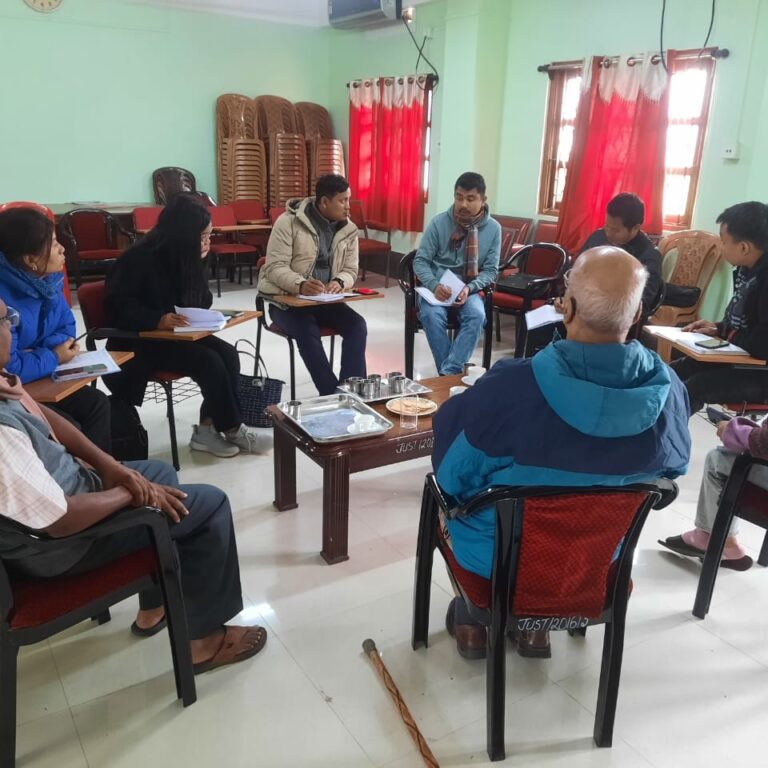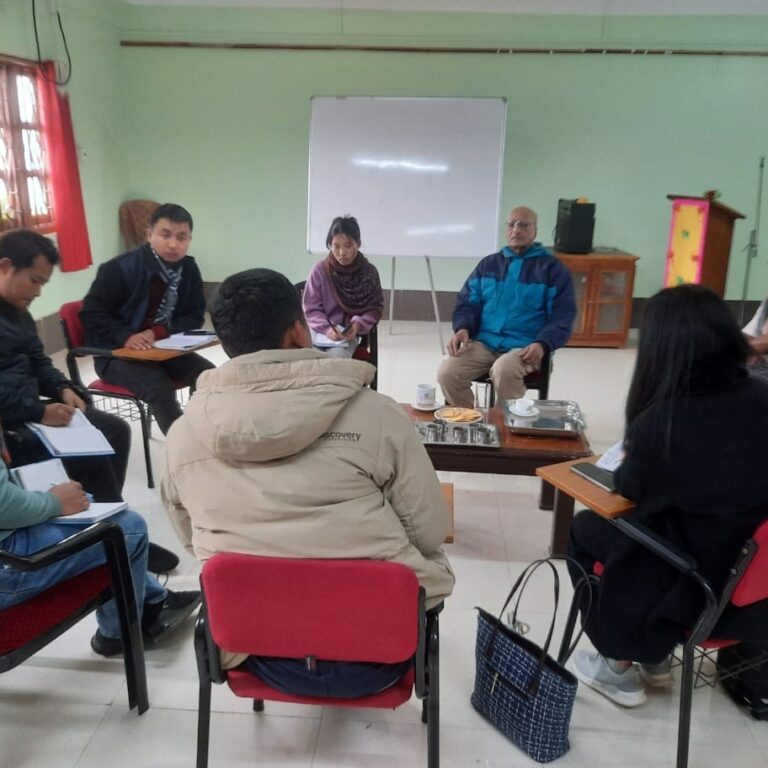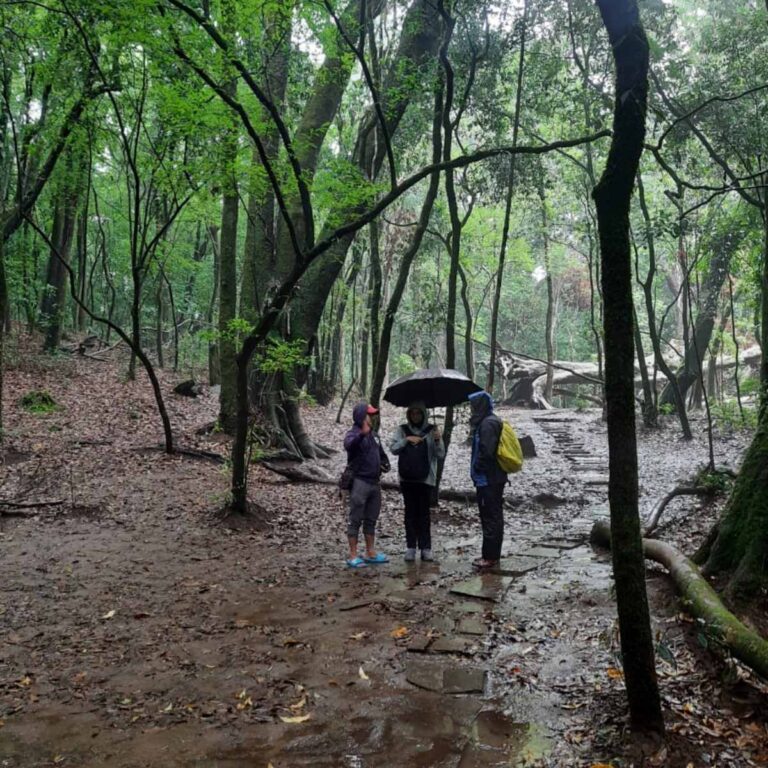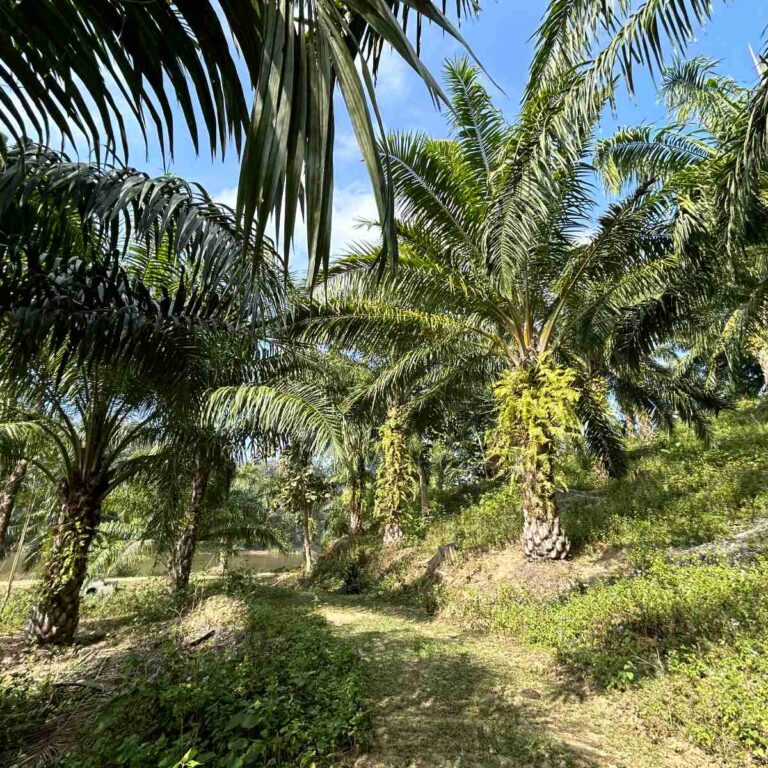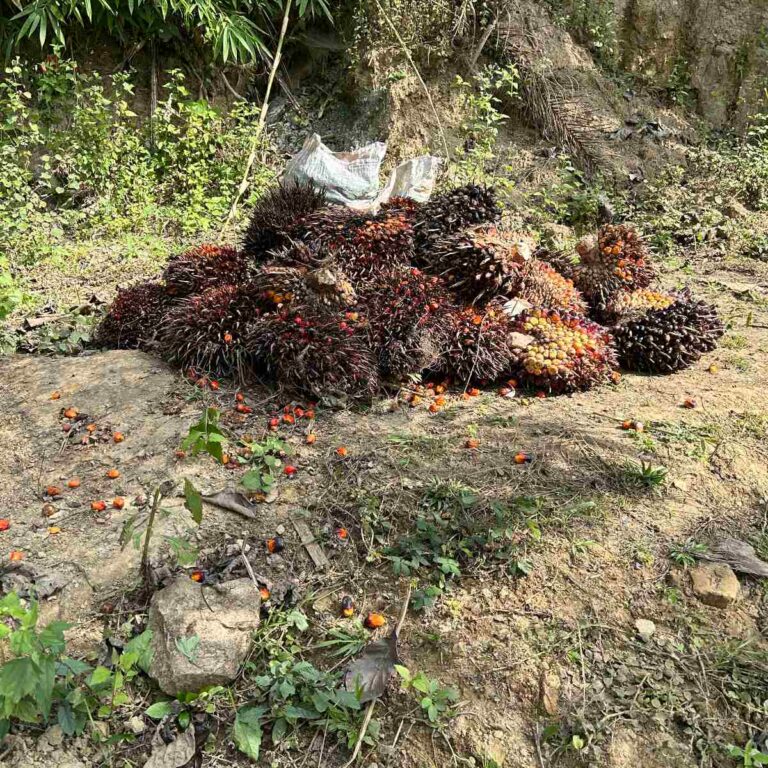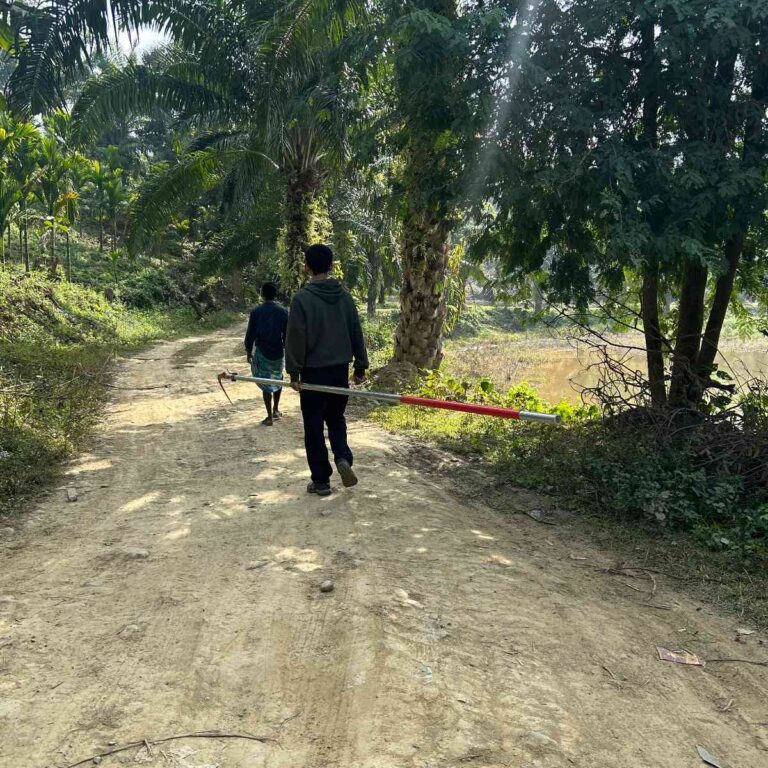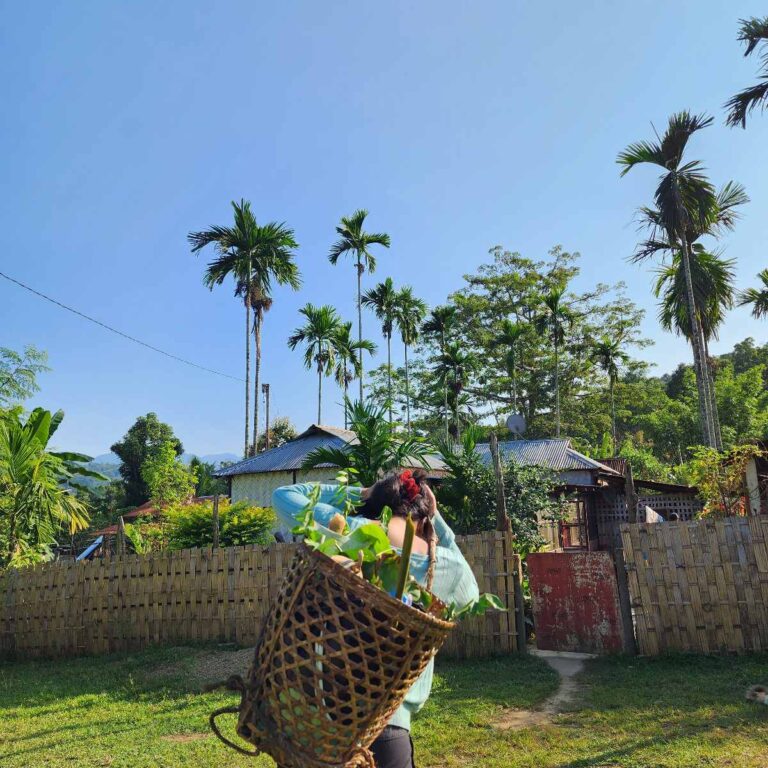III: Children and Education
Children’s education and health of children from the marginalised communities are priorities of NESRC and of others committed to marginalised communities. Ever since 2006, NESRC has studied the share of children in the Assam budget and has successfully advocated for a child budget component in it. Its focus has now shifted to the girl children because they are more neglected. Special attention is paid to the tea garden areas. Most studies on the share of children in the Assam budget were done in collaboration with HAQ, Centre for Child Rights, New Delhi.
- Walter Fernandes, Sanjay Barbora and Gita Bharali: Primary Education of Plantation Labourers’ Children in Assam. (2003)
The tea garden workers are one of the most exploited communities of the Northeast. Their health and education are neglected. This study was done in 145 tea gardens in nine districts of Assam at the request of Assam Sarb Shikshya Abhijan Mission (ASSAM) that was attempting to universalise education and wanted to understand its status. The allocation for children in the budget and the areas on which it is spent give an idea of state policies. The analysis was done from 2004 to 2008. It showed that while the amount allocated for children is low, it is lower for areas such as their protection and development. There is also an imbalance between money spent on salaries and for implementation. The report was published in book form in late 2007.
- Sleeva Allam Reddy and Pranami Garg. Assam Budgets from the Point of View of Children. (2007).
- Pranami Garg and Madhumita Puryakastha: Assam Budget 2004-05 to 2007-08. (2008)
- Paromita Shastri, Madhumita Purkayastha, Indarilin Dkhar and Daisy Nath: Budget for Children in Assam 2004-05 to 2008-09. (2010)
Done together with HAQ: Centre for Child Rights, New Delhi, these studies bring together the reports of the analysis of the budgets of the last few years from the point of view of children. This analysis of the allocations for children, is the first study of its kind in Assam. The look it takes at the allocations for children’s education, development and protection shows that while children are around 43 percent of the population, the allocations are only around 17 percent. Most allocations are for education. Other areas such as development and protection receive scant attention. Some projects such as Applied Nutrition exist on paper but no allocation has been made for them. In addition, implementation of many schemes is weak.
- Daisy Nath and Paromita Shastri: Share of Children in the Assam Budget and Sarva Shikshya Abiyan. (2010)
Sarba Shikshya Abhiyan (Universal Literacy Mission) is a major component of the plan to universalise primary education. Most funds for it come from the Union Government but are routed through the state and the development block. So the study was on the flow of funds from the Centre to the villages. It is done jointly with HAQ, Centre for Child Rights, New Delhi.
- Alphonsus D’Souza and Gita Bharali: The Value System of School Children in the Northeast. (2010)
The effort of this 17-country study coordinated by Metadigm USA, was to understand the response of adolescents to the changing social and economic situation. In the Northeast, NESRC interviewed 4.000 adolescents from 20 schools in Assam, Meghalaya and Nagaland and analysed the data. Metadigm has completed the report of the region. NESRC too will use the data.
- An Assessment of Educational Needs in Meghalaya, of Secondary and Higher Secondary Schools. Alphonsus D’Souza. (2010)
This study was done at the request of the Development and Educational Communication Unit (DECU) of the Indian Space Research Organisation (ISRO). DECU has established satellite links for most schools in Meghalaya but the study showed that but for exceptions, the link is of little use because of the non-existent or poor infrastructure of the schools. After analysing the situation, the study made suggestions to DECU on modes of improving and monitoring its implementation.
- Alphonsus D’Souza, Melvil Pereira, Wellessly Lyngkhoi, Ripamchi Sangma and Rutherford Thabah: Welfare of Children in the Coal Mining Areas of Meghalaya. (2013)
Sponsored by Childaid Network, Germany a study was done regarding child labour in the coal mines in Meghalaya to support the work of civil society groups involved in dealing with it. Its specificity in Meghalaya was identified and steps were suggested in dealing with it.
- Melvil Pereira and Chandana Kakati: Assessment of Available Facilities for Primary & Upper Primary Education in the Tribal Areas of Assam. (2013)
This study commissioned by the National University of Educational Administration and Planning, New Delhi, was an effort to understand the nature of the existing infrastructure and the type of improvements required in it.
- Melvil Pereira, Enakshi Ganguly Thukral, R. P. Athparia and Farhana Yashmin. Children and Governance: Monitoring State Budget Performance. (2014)
This study was commissioned by UNICEF, Assam and was done in collaboration with HAQ: Centre for Child Rights, New Delhi.
- Melvil Pereira, Enakshi Ganguly Thukral, Kanu Kanta Sen and Farhana Yashmin: The Share of Children in the State Budget of Assam, Tripura, Meghalaya and Nagaland. (2015-16)
After studying the Assam budget for nearly a decade it was decided to extend it to a few more states in the Northeast. The same methodology was followed.
- Melvil Pereira, Madhusmita Chowdhury et al. Financial Tracking and Implementation Status of the Integrated Child Development Scheme, Meghalaya. (2015)
This study is jointly done by NESRC and HAQ: Centre for Child Rights, Delhi.
- Bineeta Sarma: The Assam Budget 2020-21 and the Girl Child. (2020)
- Upasana Sarma and Sonakshi Goswami: Tracking Learning Loss during COVID-19 in Assam. (2022)
The COVID-related lockdown disrupted the system of education. In this sector too, the pandemic intensified the already existing inequalities. While the middle class that could afford smart phones had the alternative of online education, two thirds of the families from the marginalised communities could not afford the smart phone. A big proportion of teachers in the backward districts lacked the training and the equipment required for it. As a result one witnessed among the children of these communities, loss of learning rather than progress in teaching.
- Anurag Das: An Analysis of the Assam Child Budget 2021-23 with Focus on Girls’ Education: A Review. (2021)
During 2020-21 NESRC resumed the studies that it had interrupted for three years on the child budget in Assam in collaboration with HAQ– Child Rights Organisation Assam’s budget allocation for them, the revised estimates and actual spending. Because of the restrictions posed by the pandemic field work could not be done on the nature of the implementation. After studying different aspect of children’s education and health as given in the Assam budget, during 2020-23 NESRC decided to shift its focus to the girl child because girls are more neglected. Special attention was paid in this study to the tea garden areas. It was completed during 2022 and was presented to child rights activists, researchers on children and to some government officials at an interface on February 24.
IV: Development-Induced Displacement
These studies are integral to the All-India effort to build a reliable database on the nature and extent of land acquired in the name of national development, the type and number of people deprived of their livelihood, the number resettled or rehabilitated by the project, and the results and implications of loss of livelihood from a gender, caste and tribe perspective. These studies have fed into the national policy-making and the LARR&R 2013.
- Walter Fernandes, Shanti Chetri and Sherry Joseph: Development-Induced Displacement in West Bengal, 1947-2000. (2006)
- Walter Fernandes and Gita Bharali: Development-Induced Displacement in Assam 1947-2000. (2006)
- Walter Fernandes and Gita Bharali: Development-Induced Displacement 1947-2000 in Meghalaya, Mizoram and Tripura. (2009)
- Walter Fernandes et al.: Development-Induced Displacement in Nagaland 1947-2007 and Sikkim 1975-2007. (2011)
- Walter Fernandes, Veronica Pala, Gita Bharali and Bitopi Dutta: Development-Induced Displacement in Meghalaya 1947-2010. (2015).
- Walter Fernandes, Bokali Chisi, Medonuo Pienyu, Alibo Achumi and Mhonthang: Development-Induced Displacement in Nagaland 1947-2010 (2016).
This study was done in partnership with St Joseph’s College, Jakhama, Nagaland.
- Walter Fernandes, George Thadathil and Bitopi Dutta: Development-Induced Displacement in Sikkim 1975-2010. (2015)
This study was done in collaboration with Salesian College, Siliguri.
- Walter Fernandes, Savio Abreu, Simon Fernandes: Development-Induced Displacement in Goa 1965-2010. (2017)
This study done in collaboration with Xavier Institute of Historical Research, Alto Porvorim, Goa.
- Walter Fernandes, Bitopi Dutta and Ratika Yumnam: Development-Induced Displacement in Manipur 1947-2010. (2021)
- Walter Fernandes, Veronica Pala, Gita Bharali and Bitopi Dutta: Development-Induced Displacement in Meghalaya. 1947-2010. (2016)
- Walter Fernandes, Chishi Mughavi, Medonuo Pienyu, Alibo Achumi, Mhonthung Yanthan and Thejanuo Flavia: Development-Induced Displacement in Nagaland 1947-2010. (2016)
- Walter Fernandes, Nafisa Goga D’Souza et al: Displacement and Marginalisation in Andhra Pradesh and Telangana 1947-2010. (2018)
- Walter Fernandes, Marge Nyormi & Dusu Sambyo: Development-Induced Displacement in Arunachal Pradesh 1947-2010. (2021).
- Walter Fernandes and Thomas Malsom: Development-Induced Displacement in Tripura 1947-2010 (2022).
- Walter Fernandes, Vanlal Pari et al: Development-Induced Displacement in Mizoram 1947-2010 (2022).
- Gita Bharali: Alternatives to the Cost-Benefit Analysis of People-Displacing Projects. (2008)
Studies indicate that some 60 million persons have been displaced or otherwise deprived of livelihood 1947-2000 in the name of national development. Fewer than 20 percent of them have been resettled. The rest are impoverished and marginalised. The study was an attempt to see whether after the high price that the displaced pay the projects can be justified even in economic terms. Its first part looked at the cost and time overruns, capacity installation and utilisation of more than 100 projects all over the country. The second part studied the social and environmental costs that the people pay.
- Walter Fernandes and Gita Bharali: Impact of Displacement on the Tribes of Eastern India. (2009)
NESRC gave professional support to this study done by Action Aid, India together with Laya, Vishakapatnam, Indian Social Institute, New Delhi and others.
V: Other Livelihood Studies
- Walter Fernandes and Sanjay Barbora: The Socio-economic Situation of Nagaon. (2002)
A short-term socio-economic study of the district that has experienced much immigration from the Gangetic Plains, of Nepalis and from Bangladesh. This study was meant to help us understand the issues around immigration and the tensions linked to it, and identify ways of countering its destructive potential.
- Walter Fernandes and Pranab Jyothi Neog: Bonded Labour in Assam: New Direction of Old Unjust Systems. (2010)
It is assumed that bondage in the form seen in the rest of India does not exist in the Northeast. It was true to a great extent in the past. But with greater impoverishment, it is beginning in Assam in a new form. The situation is expected to deteriorate with globalisation. This study is one of many being done in different states of India in order to deal with the phenomenon of bondage.
- Walter Fernandes and Garima Thakuria: Land Eviction in Guwahati and Imphal. (2012)
This is a follow up of people’s struggles in these two cities against eviction from what the state calls encroachment and the people consider their right to housing. The effort is to understand the social and legal status of the people and of the state.
- Melvil Pereira and Afruza Nasrin: Climate Change and Food Security: A Case of Brahmaputra Basin of Assam. (2012)
This study is part of an initiative in a multi-stakeholder dialogue process to promote insights into trans-boundary issues across the three major river systems: Ganges, Brahmaputra and Meghna. It is an IUCN study aimed at promoting trans-boundary collaboration in the context of escalating tensions between countries on water sharing.
- Walter Fernandes, Tiken Das and Furzee Kashyap: Tribes Divided Between Northeast India and Myanmar: A Cross Border Study of Their Relations. (2013)
Official trade exists between India and Myanmar. Equally important are the ongoing relations between the Naga, Zomi and other tribes living on two sides of the border. Trade and other exchanges between the two sides have to understood also in relation to this exchange that is considered informal but is crucial for the existence of the tribes divided by the international border.
- Melvil Pereira and Jyotikona Chetia: Safeguarding Commons for Next Generation: A Study of Common Property Resources. (2012)
This study commissioned by Seva Mandir, Udaipur was done in an effort to understand the tribal commons and find ways of protecting them.
- Melvil Pereira and R P Athparia: Independent Monitoring and Hand Holding Support on WIFS in Dibrugarh District of Assam. (2015)
This study was commissioned by UNICEF, Assam.
- Melvil Pereira and Angshuman Sarma: Causes and Extent of Health Vulnerability: A Study of Health Status of Women and Children in the Tea Gardens of Assam. (2016)
This study was commissioned by the National Foundation of India, New Delhi.
- Melvil Pereira and Bhaskar Athparia. Tracking of WIFS Implementation and provision of handholding support in selected Tea Gardens of Upper Assam. (2016)
This study was commissioned by UNICEF, Assam.
- Walter Fernandes, Asojiini Rachel Kashena, Vareishang Phungshok (Manipur), Prof. Lanusashi Longkumer, (Nagaland) and Sanat Chakraborty, (Tripura): A Study of Forest Legislation and Implementation in Manipur, Nagaland and Tripura: An Introduction. (2022)
- Coordinated by Walter Fernandes inputs by Dr Anthony Dias, Salaam Rajesh and Ramananda Wangkeirakpam (Manipur), and Sanat Kumar Chakraborty (Tripura): Forest Development and Climate Change Adaptation in Manipur and Tripura. (2023)
The Northeast of India has been identified as the carbon sink for Western Europe. Much is, therefore, being invested in the forests of the region. One sees in this move the possibility of the project turning purely into greenery and commercial forests, to the exclusion of the people who depend on them. The study is an effort to understand the role of the tribal communities in the scheme in Manipur and Tripura that were chosen for it. The effort is made also to identify the climate change related adaptation components in the project, study their implications for the communities depending on them and ensuring their involvement.
- Walter Fernandes: A Baseline Survey of the Myanmar Refugees in Manipur and Mizoram.
Because of the unrest in Myanmar there is a sudden rush of refugees to Mizoram and to districts of Manipur whose populations belong to the Chin-Kuki-Mizo family. Relief had to be organised for them so NESRC did the baseline survey at the request of JRS-SA.
VI: Conflict and Peace Studies
Under “Peace initiatives” peace activists most of whom have themselves experienced ethnic conflicts did the studies under the direction of the NESRC staff. In Nagaland, they studied the traditional conflict resolution mechanisms of the Lotha and in Assam of the Karbi and Dimasa, and of the Chakma from Mizoram whom a conflict had driven to refugee camps in Tripura. In Manipur, they worked to include the presentation of conflicts and peace in text books. The objective is to upgrade their analytical skills in order to better deal with conflicts.
- Conflicts and Peace in the Northeast. (2006-07)
Studies were done by six different partners, NESRC being one of them. These studies were edited by Lazar Jeyaseelan with assistance from Walter Fernandes, published in 2008 and reprinted in 2011.
- Padmini Lanngthasa. Sunil Terang Dili and Yanthan Ezung: Traditional Methods of Conflict Management among the Dimasa, Karbi and Lotha Naga Tribes. (2011)
Conflicts have also existed in the past among the tribes and most of them had methods based in customary law to solve them. Because of the changed situation, not all the methods may be relevant but ways can be found of upgrading their traditional systems to suit present needs instead of replacing them completely with methods unknown to them. The traditions of three tribes were, therefore, studied in order to find a way of achieving this goal.
- Melvil Pereira, Ankita Gupta and Shaunna Rodrigues: Psycho-Social Care of Children in Conflict Zones: The Case of North East India.
The partners involved in this study were Peace Channel in Nagaland, Jana Unnayan Samiti Tripura (JUST) in Tripura, and Diocesan Social Service Society in Manipur.
- Melvil Pereira and Bhaswati Borgohain: The Role of the Media in Conflict Resolution.
This study was done in partnership with Peace Channel, Dimapur; Diocesan Social Service Society, Manipur, and JUST, Agartala.
- Walter Fernandes and Bhaswati Borgohain: Understanding Autonomy, Self-Determination and Sovereignty as Tools for Peace.
This study was done in collaboration with DSSS-Imphal, JUST-Agartala and Peace Channel, Dimapur.
- Walter Fernandes, Asojiini Rachel Kashena and Anindita Datta: Living with Conflicts: Possibilities of Peacemaking in the Northeast.
- Walter Fernandes and Kusumika Ghosh: The Role of Religion in Conflicts and Peace in North East India. (2018)
- Walter Fernandes & Namrata Kalita: Traditional Conflict Resolution Mechanisms of the Tribes in North East India.
The objective of this study was to bring people together for confidence building measures with long term peace in view. The attempt in this study was to look at the traditions of eight tribes on conflict resolution and possibilities of updating them to suit the present situation.
- Joseph Zoliana, Theophilus Basumatary, Casimir Isha Nungchim and Joten Reang: The Impact of COVID-19 on the Migrant Workers & Students of Assam, Manipur & Tripura. (2021)
The study done in the BTAD area of Assam, in Manipur and Tripura is an attempt to understand the impact of the nationwide lockdown that dislocated the migrant population. With no jobs, no money, with public transport shut down, thousands of them had to return to their homes, at times walking hundreds of kilometres. The attempt in the study was to understand the processes that led to joblessness and greater poverty among them. Its hypothesis is that the pandemic did not create inequalities but intensified the inequalities already existing in the Indian social system.
- Joseph Zoliana, Sarah Phanchopi, Samuel Horo and Manpang Nyiam: Traditional Tribal Conflict Resolution Mechanisms in Nagaland and Karbi Anglong, Assam. (2022).
By studying the Karbi-Dimasa conflict of 2005 and the ongoing land related Pochury-Chakesang tension in Nagaland an attempt was made in the study to understand the traditional systems and the possibility of updating them to suit present day needs. Its hypothesis is that no tradition has all the answers to present day questions but they can be updated and modernised to suit present needs.
